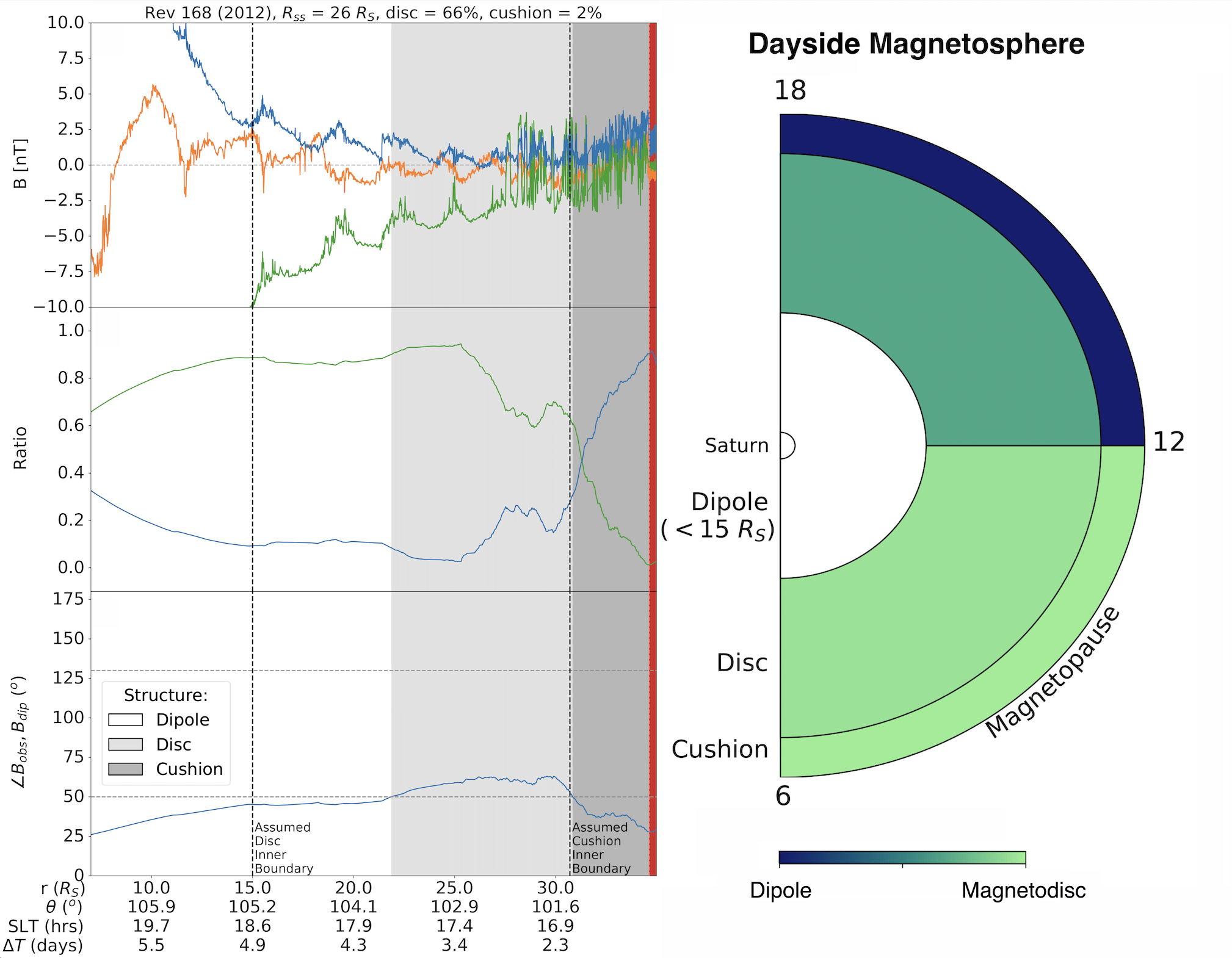MIST
Magnetosphere, Ionosphere and Solar-Terrestrial
The Cushion Region and Dayside Magnetodisc Structure at Saturn
By Ned Staniland (Imperial College London)
The moons Enceladus and Io are internal plasma sources for the magnetospheres of Saturn and Jupiter, respectively. This, coupled with their rapid rotation rates (~10 h), radially stretches the magnetic field from a dipole to a magnetodisc. However, this structure can break down at large distances where the magnetic field can no longer contain the equatorial plasma. This quasi-dipolar layer between the current sheet outer edge and magnetopause is known as the “cushion region.” This has previously been observed at Jupiter, predominantly at dawn, but not at Saturn (Went et al., 2011). It is suggested to be populated by mass-depleted flux tubes following magnetotail reconnection.
We present the first evidence of a cushion region forming at Saturn. From the complete Cassini orbital dataset, only five examples are identified, showing this phenomenon to be rare, with four at local time dusk and one pre‐noon. The dusk cushion observed could be due to asymmetric heating of plasma in the Saturn system (Kaminker et al., 2017), as well as the changing magnetic field configuration through dusk where the field is less confined by the magnetopause, resulting in disc instabilities (Kivelson and Southwood, 2005).
These results highlight a key difference between the rotationally driven magnetospheres of Saturn and Jupiter. The rare cushion region examples found and evidence of patchy reconnection at Saturn (Delamere et al., 2015) compared to the persistent cushion region at Jupiter (Went et al., 2011) and statistical x-line across the Jovian tail (Vogt et al., 2010) shows that the mass transport and loss mechanisms differ between these systems. Whilst the Saturn system is often described as being between Jupiter and the Earth in terms of dynamics and structure, these results suggest that this is perhaps an oversimplified description.

Figure: The left plot shows an example of a cushion region at Saturn. The top panel shows magnetic field data. The second panel showing the relative contributions of the radial (green) and meridional (blue) components to the total field. The third panel shows the angle between the observed field and a dipole. For this example, the field is disc-like in the middle magnetosphere, but the structure breaks down in the outer magnetosphere (highlighted by the background colours). The right plot shows the average dayside magnetic field configuration. The field is more disc-like in the dawn sector whilst there is a quasi-dipolar region in the outer magnetosphere at dusk.
Please see the full paper for details:
, , , & (2021). The cushion region and dayside magnetodisc structure at Saturn. Geophysical Research Letters, 48, e2020GL091796. https://doi.org/10.1029/2020GL091796